Starting Points for Abstraction: Week 1: Ideas and Rules
June 21, 2021
Why would any one paint an abstract work?
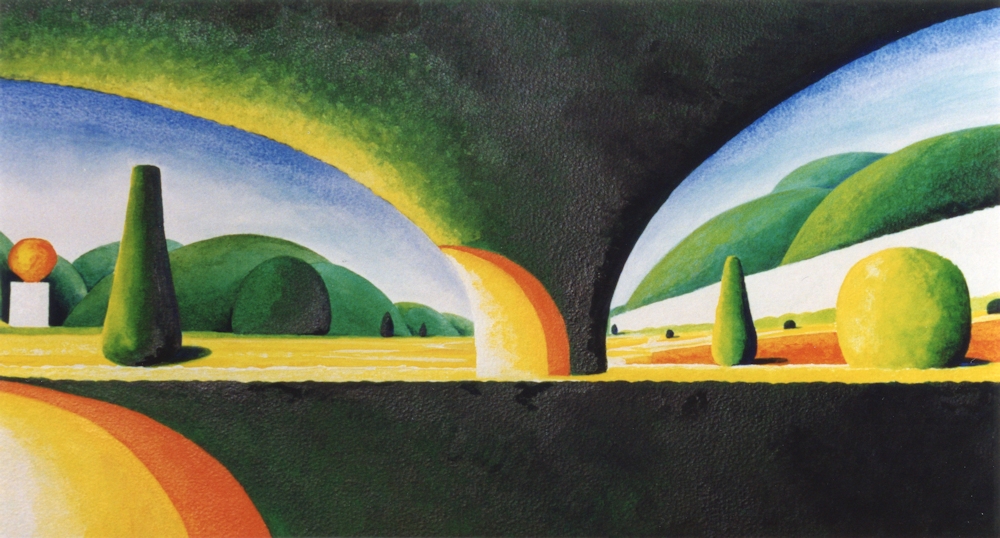
Acrylic on paper
Abstract based on observation, simplification and exaggeration of forms
The fast answer is to express an idea, an emotion or reaction without direct reference to tangible objects.
The reality is that many abstract paintings do reference recognisable things but they are significantly transformed. Given that in painting objects are already transformed from three dimensions to two it does not seem surprising that abstract art at its purest has no relation to objects but that there is a continuum from highly representational art at one end, to paintings with simplified or altered forms, and at the other end more radical abstraction where the shapes whether organic or geometric bear no relation to objects.
However being set free from objects does allow the artist to express mood with colour, with jagged or smoothe lines, slow or fast lines, lines made slowly, hesitantly or at speed, or shapes that are geometric or organic with hard or soft edges.

Watercolour
Intuition: This painting began as the wavy line across it. Some candle wax was rubbed rather randomly across and layers of watercolour washes some wet and some applied with a sponge. There was no initial idea just a get on with it and paint shapes, spots and introduce colours that seemed to be a next best step at each stage till it seemed time to stop. The title was given after the work was made.

Acrylic on paper
Idea: interpretations of scale/scales made visible by geometric shapes
Musical scales are the little stairways of rectangles; metronomes without pointers the three outside small triangles; the central part is filled with a balance and there are further triangles of different size; only the colour is intuitive but seeks to find a balance for each side
The most useful analogy is with music, the most abstract of the arts. It is not surprising that many artists have written on this subject. Music can be described as joyful, frivolous, melancholy, sublime, romantic, loud, soft, tender. So it is expressive without direct reference to objects.
What else? Various kinds of music have different rules within which they are made made; scale, rhythm, pattern, variation etc.
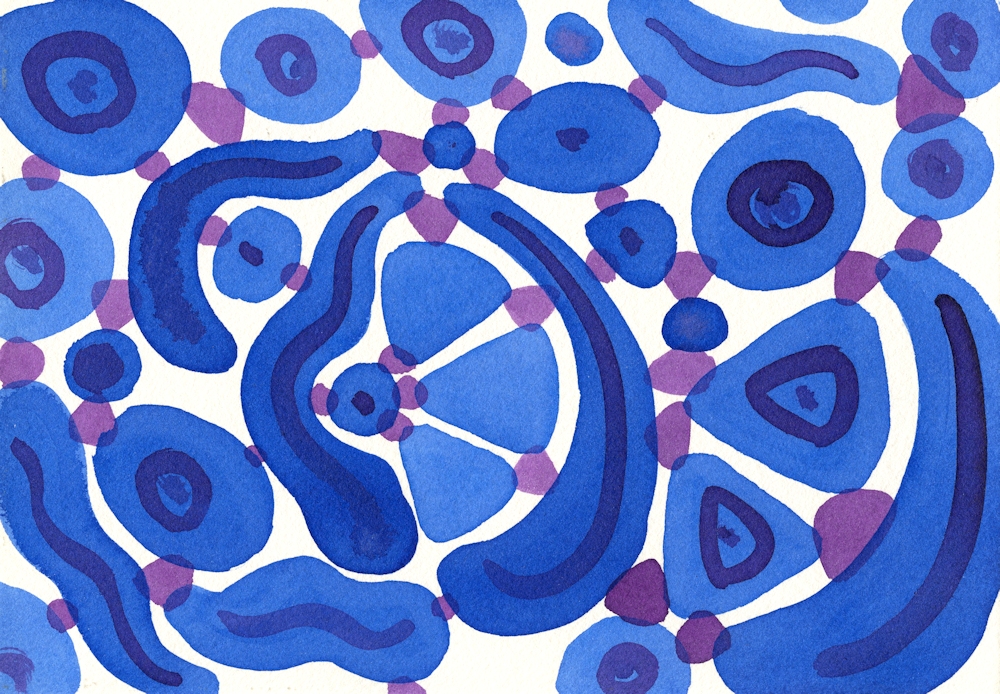
Acrylic ink on paper
Rules and Intuition A more intuitive study but where the artist chose to restrict one colour to the larger shapes and purple to the smaller connecting shapes producing a sense of movement. The final result was not envisaged at the beginning. The blue shapes were placed one at a time till the rectangle was filled and then connected by the purple shapes.
Music is created by a composer and interpreted by musicians so that the often written score/composition can be made audible.
Any composition will be a result of the composer’s imagination, intuition and skill within the rules of his/her musical culture and that culture will develop as the composer’s thought processes discover new ways, new rules etc. only limited by his/her imagination and will to experiment.
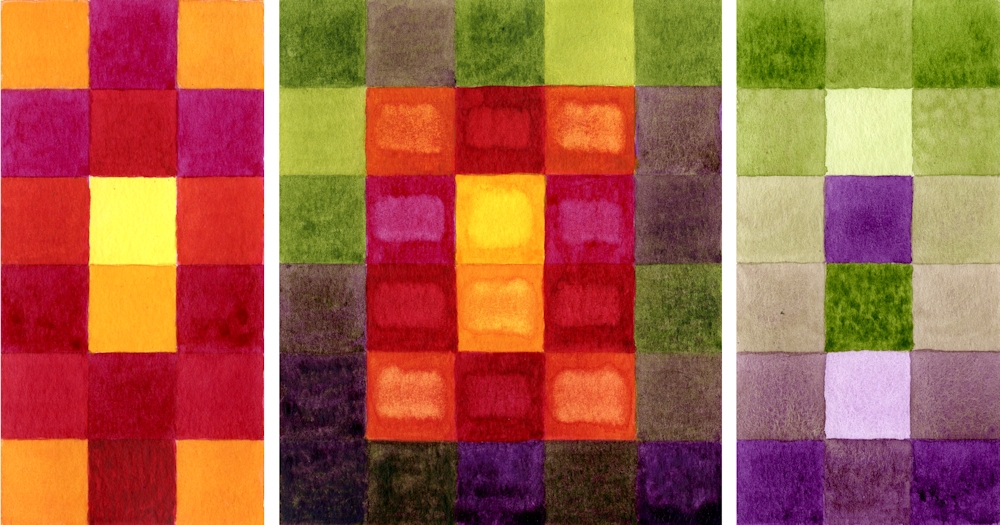
Watercolour
Rules and Idea; The idea is to represent the outside and the inside of the fig separately and combined. The rule is to make coloured squares to do so. The aim is to show the coolness of the exterior compared to the richness of hues within.
Music has an audience which receives and interprets the music. Painting has an audience that similarly receives and interprets. Figurative (representational) art works can be appreciated for their skill, the stories they tell, and often evoke an emotional response. They obey rules to varying degrees; of perspective, tone, and shape of the objects within a composition.
Music does this without reference to objects, though natural sounds, of the cuckoo, for instance may be incorporated into the music. The artist may also wish to produce works which rely less on the appearance of objects, producing expressive works freed from tangible subject matter.

Acrylic paint sticks and acrylic ink on paper
A part accident and part intuitive composition; some of the paint was dripped on to a wet surface and lines extended through pale areas with a brush handle.
In this way Paul Klee described a paint box as the artist’s equivalent to a keyboard. He is deserving of study as possibly more than any artist Klee investigated the processes behind making abstract and imaginative works which may start with an idea or observation but do not have to. One can institute rules for development of the work or work very intuitively and over the next four weeks we will scratch the surface of some of these ideas.
The practical challenge for this week;
Reference the works of Paul Klee on the Pinterest Board at:
https://www.pinterest.co.uk/jhall1282/abstraction/paul-klee/
and Piet Mondrian at
https://www.pinterest.co.uk/jhall1282/abstraction/mondrian/
Make your own rules and then create two or three small paintings with expressive colours to set the mood of each. The paintings may be as small as 6 x 6 inches if working in gouache or watercolour, and larger if working in acrylic and all should be variations using the same rules. You may of course work larger if you prefer.
Make your own rules and write them down, or use one of the suggestions below;
1.Work with a grid however loose or tight and use colour and texture to suggest a remembered place or event.
2.Make a square or rectangle. Fill it with the same geometric shape at different sizes. They may overlap and be at any orientation. Colour using a limited palette or shades of one colour.
3.Fill a rectangle or square with groups of parallel straight lines at various angles to each other. Each line should meet another line at each end. No lines should extend the whole length or width of the rectangle or square. Fill the shapes with a harmonious colour scheme except for one complementary area. Reference Klee’s work ” Forest Architecture” or “Castle to be built in the Forest”.
4. Similar to 3. but the lines may be curved
Use colour to set the atmosphere/mood of each painting. Your own rules may include using different organic shapes connected by lines or shapes or shapes that are enclosed or partly enclosed by other shapes. The possibilities are endless. After a few quick doodles go for one set of rules and stick to it.
During the practical session we will review the work and look at more intuitive starting points and how these can be developed.
Your paintings;
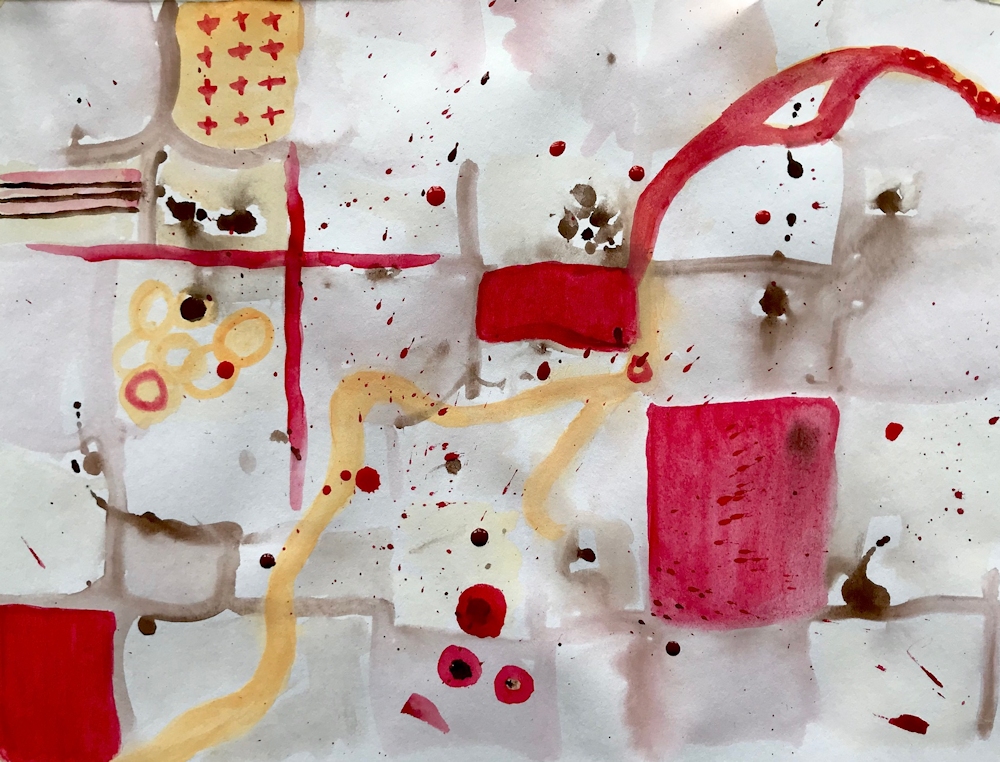
by Heather

by Malcolm
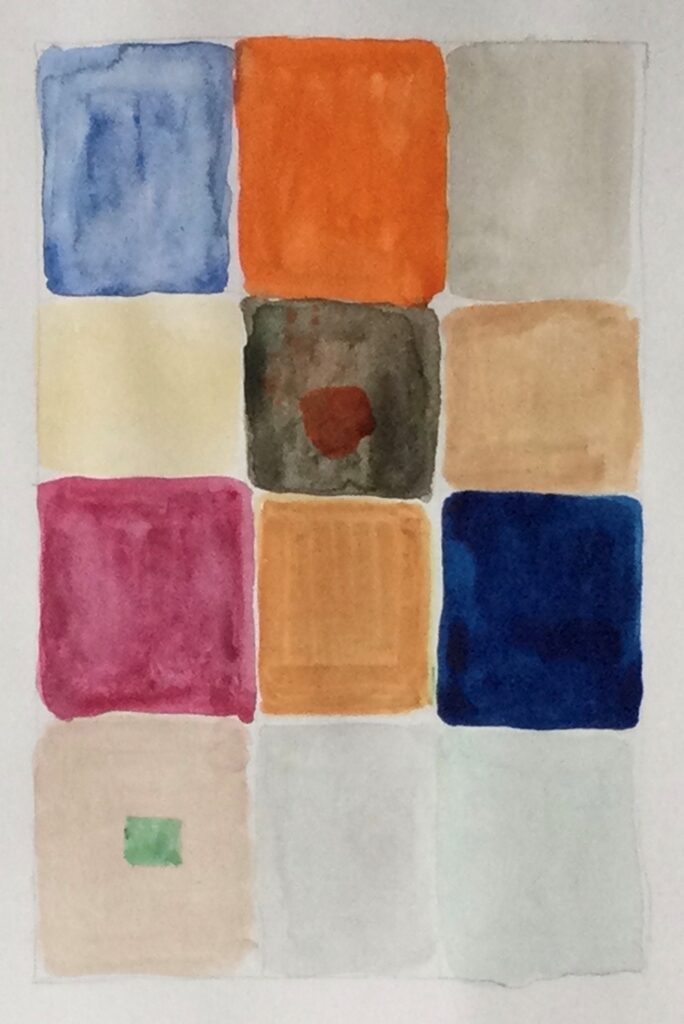
by Virginia
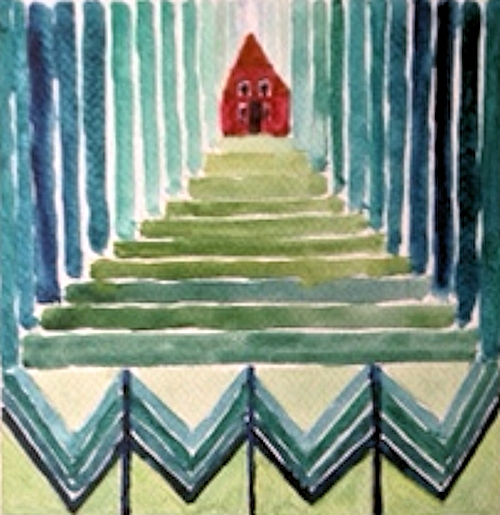
by Liz

by Liz
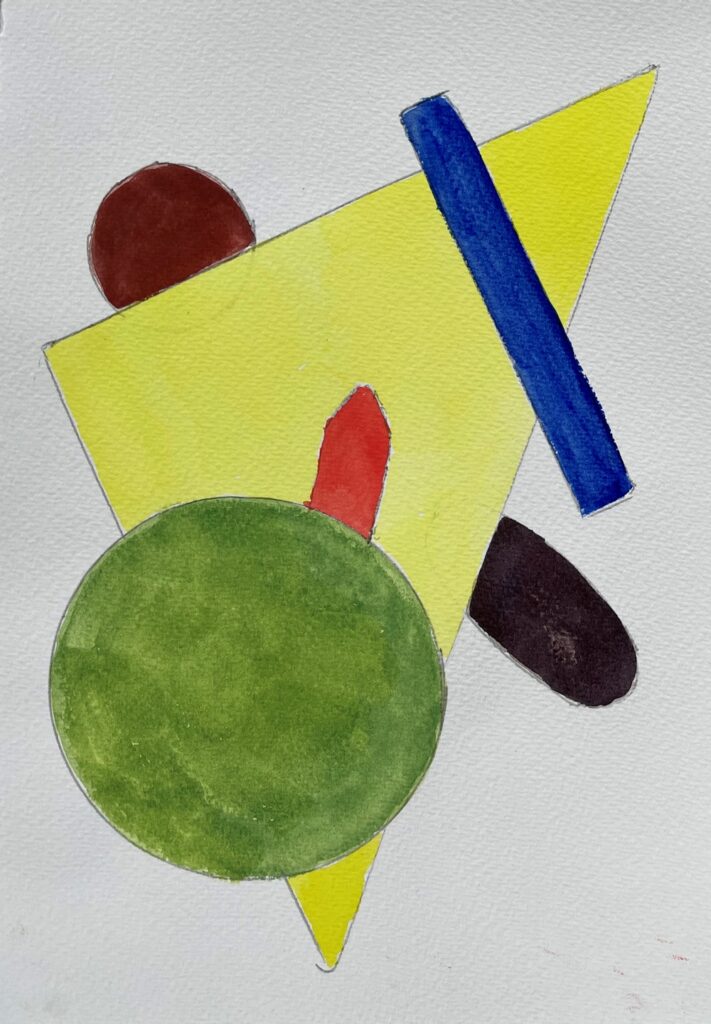
by John
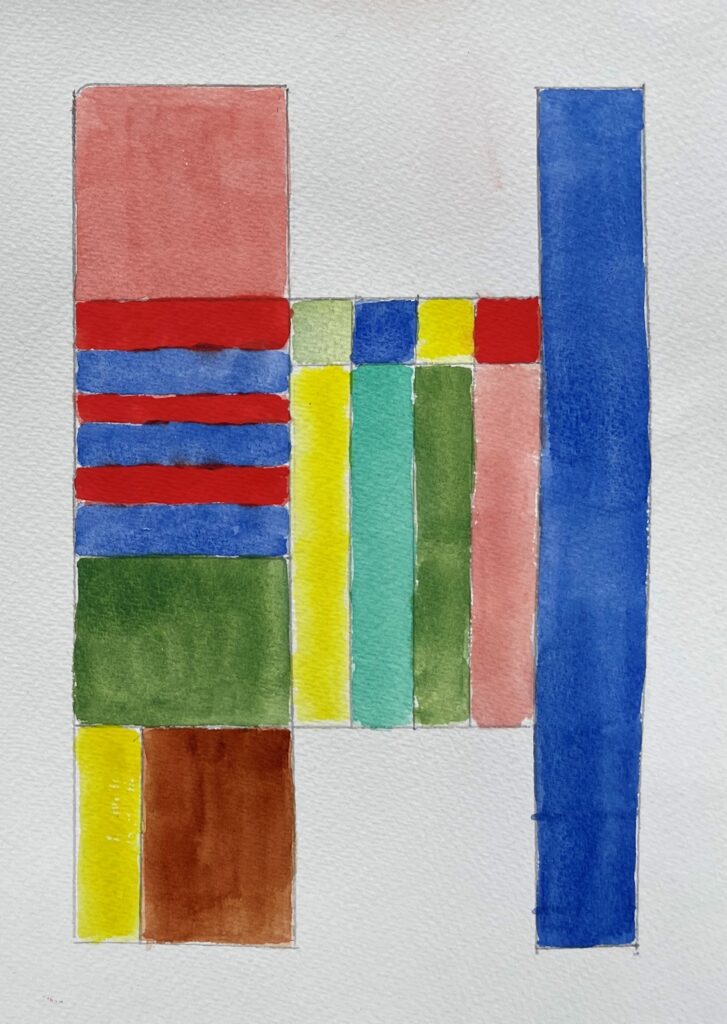
by John
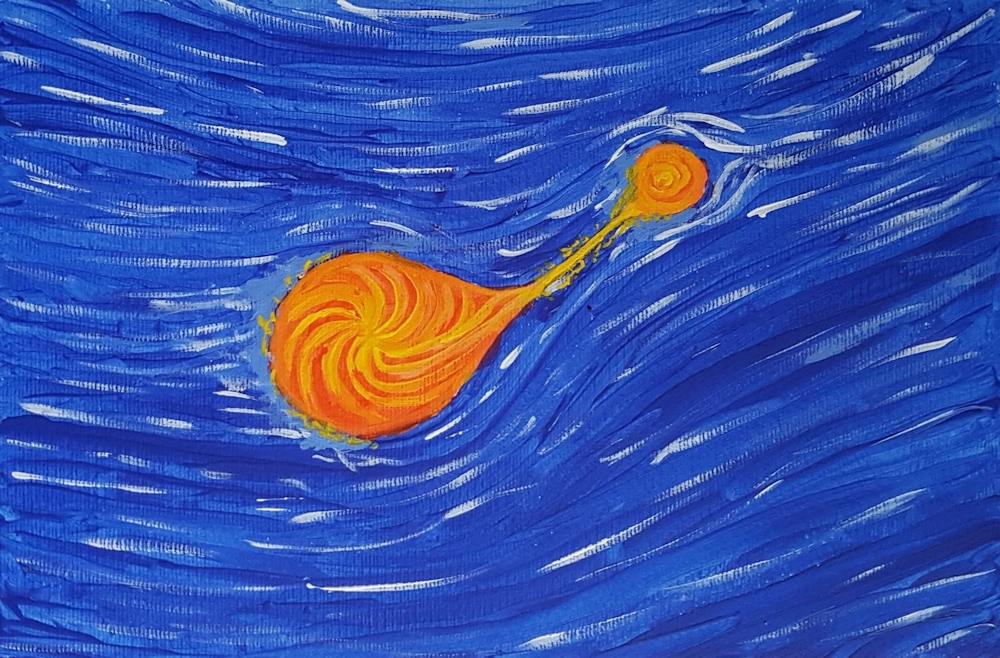
by Malcolm
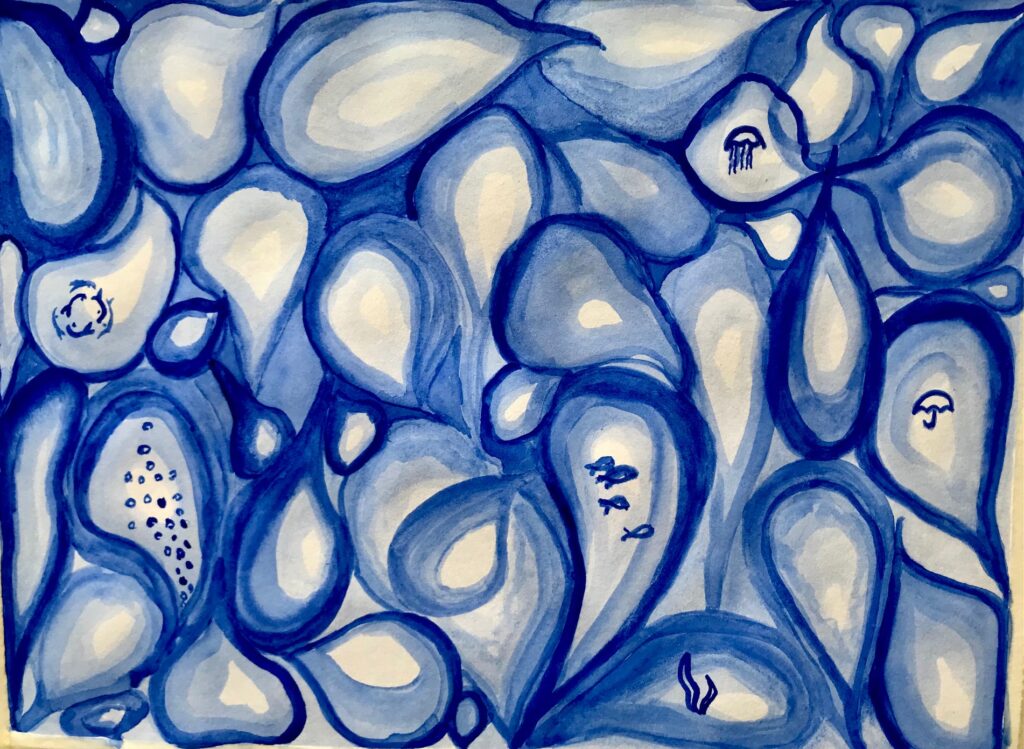
by Heather
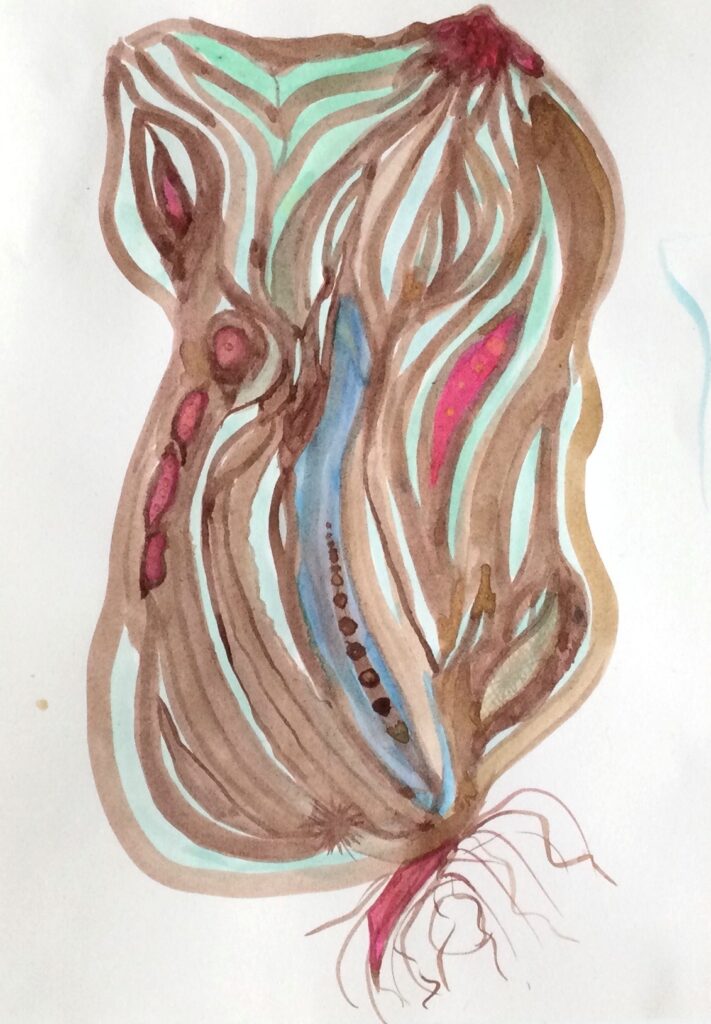
by Virginia